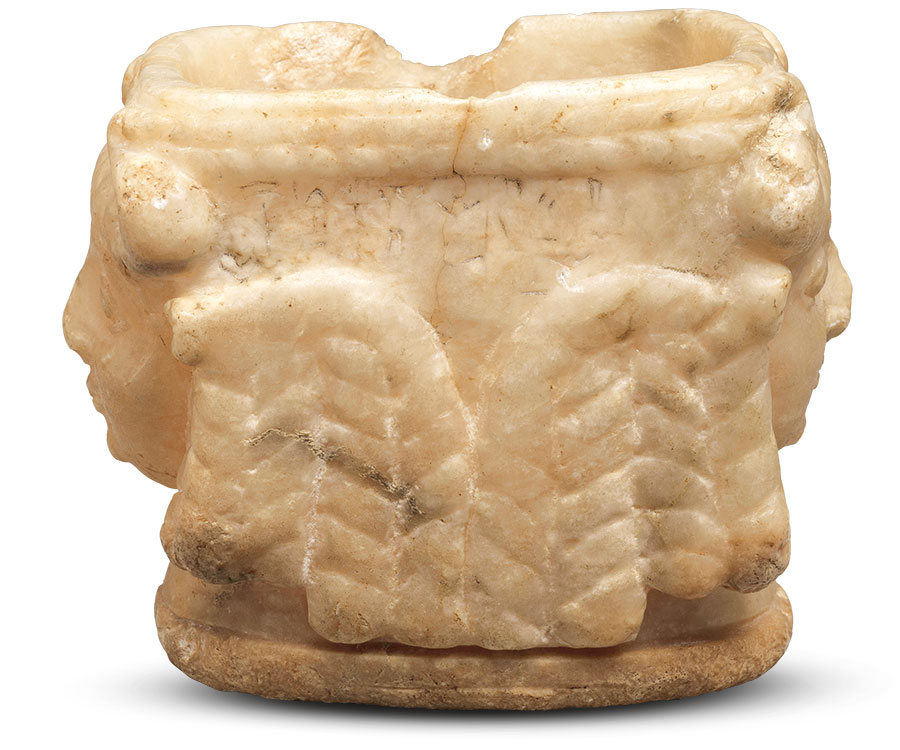A single divine female figure, anthropomorphic but with bovine features, is embodied in the two identical faces carved on this alabaster vessel. The wide-open eyes and full cheeks resemble those of statues of female worshippers during this period, while the delicately braided hair is reminiscent of contemporary depictions of goddesses—a sign of abundance and tamed wildness also expressed by the stylized cow horns. Each horn extends to circumscribe the rim of the vessel, linking the two faces to each other and to the object itself. This unity, together with the bright translucency of the alabaster, suggests that this vessel served as a divinized cultic object.
Vessel with faces of female deities
Mesopotamia, Sumerian
Early Dynastic IIIa period, ca. 2500 BC
Inscription largely abraded in antiquity
Gypsum alabaster
The Metropolitan Museum of Art, New York, Gift of Alastair Bradley Martin, 1973; 1973.33.1
© The Metropolitan Museum of Art. Image source: Art Resource, NY
Sidney Babcock: Mesopotamian artists began depicting gods and goddesses in human form in the third millennium BC. Horns became the most prominent symbols that were used to distinguish deities from mortals, often added to depictions in the form of horned crowns. This vessel of translucent alabaster presents a rare and peculiar use of this symbol: horns are not part of an external crown here but protrude directly from the two identical female heads carved on each side of this object. Moreover, each horn extends to circumscribe the rim of the vessel, linking the two heads to each other and to the object itself.
This vessel would have been used to hold libations offered to deities. Ancient texts indicate that such ritual objects could be regarded as divine entities themselves. Therefore, rather than depicting two specific goddesses, this vessel was most likely a divinized cultic object. Once the offering was poured into the void in the middle, the two heads would metaphorically blend into one another, turning into a single divine female being.




